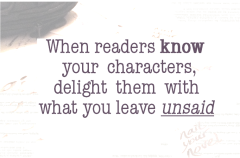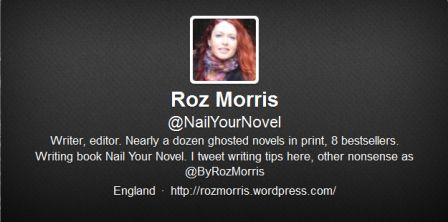Roz Morris's Blog, page 84
May 11, 2013
3 ways the author temperament hinders our writing – post at Authors Electric
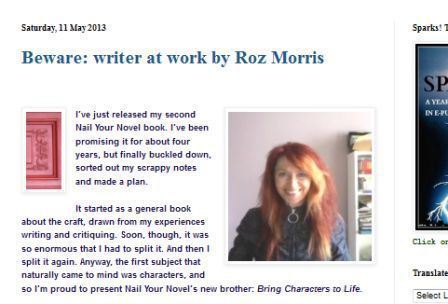 Characters and personality. Not the ones in your books: I’m talking about you, the brain that’s parked snugly behind your eyes and the temperament that feels the urge to write. Sometimes our human wiring is not ideal for creating the kind of havoc we need for stories – which is quite amusing in its own way.
Characters and personality. Not the ones in your books: I’m talking about you, the brain that’s parked snugly behind your eyes and the temperament that feels the urge to write. Sometimes our human wiring is not ideal for creating the kind of havoc we need for stories – which is quite amusing in its own way.
Anyway, I’m enjoying this conundrum today at Authors Electric – do jump the gap and see.


May 8, 2013
‘Art that engages the sixth sense’ – The Undercover Soundtrack, Tom Bradley
 My guest this week is part of a program that publishes unusual fiction that drenches all the senses. He describes Alexander Nikolayevich Scriabin as both the ‘inner ear’ and the central nervous system of his novels which were written as collaborations with artists. His Undercover Soundtrack is wonderful, eerie, apocalyptic and elastic; his name is Tom Bradley – and you can meet him how on the Red Blog.
My guest this week is part of a program that publishes unusual fiction that drenches all the senses. He describes Alexander Nikolayevich Scriabin as both the ‘inner ear’ and the central nervous system of his novels which were written as collaborations with artists. His Undercover Soundtrack is wonderful, eerie, apocalyptic and elastic; his name is Tom Bradley – and you can meet him how on the Red Blog.


May 6, 2013
Before you spend money on publishing services, read this
 As indies get ever more professional, an entire service industry is springing up to offer us services for every occasion. At this year’s London Book Fair, the Authors’ Lounge was heaving with suppliers, and no shortage of willing customers. While it’s great to have access to these, authors are ripe for rip-off.
As indies get ever more professional, an entire service industry is springing up to offer us services for every occasion. At this year’s London Book Fair, the Authors’ Lounge was heaving with suppliers, and no shortage of willing customers. While it’s great to have access to these, authors are ripe for rip-off.
This week David Gaughran highlighted unscrupulous companies that charge exorbitant prices, or hoodwink authors into paying for services that could be obtained for very little or no cost.
So this post is a self-publishing 101; a catch-up for those who are wondering what they need to spend money on. In some cases, knowledge is the answer; all books, authors and genres are different, and one supplier does not fit all.
It’s virtually impossible to publish a book without any expenditure, but we can make sure we use our budgets wisely – and stop writers filling the pockets of unscrupulous suppliers who are getting rich on our dreams.
Publisher accounts
Some authors don’t know they can create their own user accounts on Smashwords, Kindle Direct Publishing, Kobo and CreateSpace. Or how simple it is – basically, no more difficult than entering your details in a mail-order website.
Some companies offer to upload your books through their account, but this is unnecessary. Even if you don’t make the files yourself, you can still upload them. If your service company went out of business, what would happen to your book listings? Moreover, if a third party controls your access to these publishing platforms, it’s harder to adjust your book’s appearance and description – which as you’ll see is essential to successful self-publishing.
Ebook formatting
This week, as you may have gathered, I published the follow-up to Nail Your Novel. I was rusty with the e-platforms, but it didn’t take long to get reacquainted.
Basic ebook formatting is dead simple if you can use Word on an everyday average level. You don’t need to be a wizard, but you do have to be meticulous. The best instructions are at the Smashwords Style Guide, a free book with diagrams and reassuringly clear instructions. There are a couple of other useful links in this post I wrote 2 years ago when I first ventured onto Kindle. I reread them when I uploaded my new book last week and it all went smoothly.
Indeed, if you have Scrivener, it will format ebooks for you.
Print book interiors
Print books are more tricky than ebooks, and amateur ones can look dreadful. But there are various tools to help beginners do a good job for very little money.
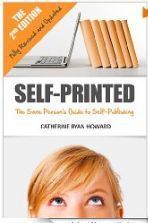 I recommend you read Catherine Ryan Howard’s book Self-Printed, which I used the first time I ventured onto CreateSpace and I still keep to hand to remind myself how to set up a book. She also has a ton of other useful guidance on book formatting.
I recommend you read Catherine Ryan Howard’s book Self-Printed, which I used the first time I ventured onto CreateSpace and I still keep to hand to remind myself how to set up a book. She also has a ton of other useful guidance on book formatting.
How do you make the interior? CreateSpace provides Word templates, if you need help (although I make my books in a design program and upload a PDF). CS templates are pretty plain, and Word isn’t ideal for interior formatting, but it’s fine for novels, which require hardly any design. In any case, a neat finish isn’t created by fancy typesetting, it’s from consistency and readability – and you can find a post I wrote on that here.
If you want a slicker look for little money, try Joel Friedlander’s book design templates for use in Word. Joel has created interiors that you graft your text into – which is exactly what happens when books are designed in mainstream publishers (although they don’t use Word).
Which print-on-demand company should you use? There are two main options: Lightning Source and CreateSpace. LS isn’t suitable for beginners. It costs to start a book project and proofs are expensive. CS, though, is free to set up and holds your hand. Here’s a post I wrote comparing the two for novice publishers.
Covers
A great cover is money well spent. But you need to take creative control because you could end up with something unsuitable, horrible, or even illegal if the designer downloaded images from Google instead of sourcing them legitimately. This happens.
When you hire a cover designer, you need to know how to choose them and how to know when the job has been done properly. Identify your genre, familiarise yourself with its most successful covers, then you’ll know how to judge which designer is right for your book. Here’s a post I wrote recently on getting a cover designed.
Marketing
At LBF I talked to a publicity company to find out how they’d publicise a literary novel. They hadn’t tackled literary fiction before, and seemed unwilling to admit it until I pressed them hard. If I’d been a newbie, they’d have been selling me expensive packages that were unsuitable for my book. (I wasn’t looking to buy anyway; I was asking out of curiosity.)
With marketing, learn as much as you can before you hire publicists or buy advertising. I’ve learned a lot from Joanna Penn’s blog, and this is where I’d send you too.
Not all marketing has to cost money. Book descriptions, price point, tagging, titling and categorisation will all affect whether your book can be found by its ideal readers and you can experiment and tweak ad infinitum. (Remember I said you don’t want to have to ask a third party whenever you adjust your book’s back end? This is a good reason why.) You might find you know more about marketing than you realise, as I did when I was asked to write this guest post.
Two more books I’m going to recommend: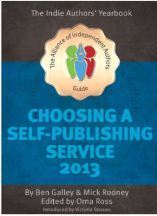
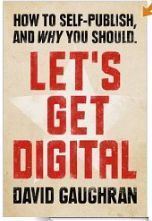 Choosing a Self-Publishing Service
by the Alliance of Independent Authors
Choosing a Self-Publishing Service
by the Alliance of Independent Authorsand Let’s Get Digital by David Gaughran
psst… Editorial services
First, of course, you need a book that’s fit to be published. In a publisher, there would be a team of people handling different editing stages:
developmental (the big picture: book structure, characters, narrative voice, plot etc)
copyediting (niggly details like plot consistency, names, timelines)
proofing (looking for typos and other mistakes)
It’s worth hiring expertise to help you with these and it’s unlikely that you can do it cheap. But you can choose wisely: here’s my post on issues to be aware of.
Thanks for the pic Horia Varlan
What other warnings and tips would you add to my self-publishing 101?
Nail Your Novel: Bring Characters to Life

Alive and sparking now on all ebook formats


May 2, 2013
It’s live! New Nail Your Novel book shows you how to create characters who keep readers hooked and make you want to tell stories
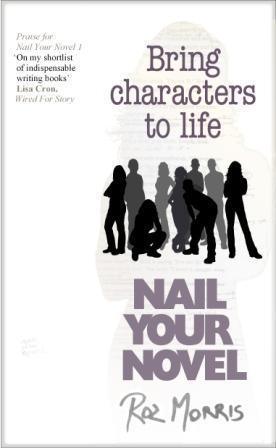 Three guesses what it’s about … but here’s the formal blurb…
Three guesses what it’s about … but here’s the formal blurb…
How do you create characters who keep readers hooked? How do you write the opposite sex? Teenagers? Believable relationships? Historical characters? Enigmatic characters? Plausible antagonists and chilling villains? How do you understand a character whose life is totally unlike your own?
How do you write characters for dystopias? How do you make dialogue sing? When can you let the reader intuit what the characters are feeling and when should you spell it out?
I’ve mined 20 years’ worth of writing and critiquing experience to create this book. It contains all the pitfalls and sticky points for writers, laid out as a set of discussions that are easy to dip into. And it wouldn’t be a Nail Your Novel book without a good dose of games, exercises and questionnaires to help you populate a novel from scratch.
Whether you write a straightforward story-based genre or literary fiction, Bring Characters to Life will show you how to create people who enthrall readers – and make you want to tell stories.
Weightless editions are ready right now, twinkling on the servers of Amazon.com, Amazon.co.uk, Smashwords and Kobo.
If you like more heft in your hand, the 200+-page paperback is in progress, and will proceed as fast as an index can be built and proofs can fly the Atlantic.
Ebook price GBP £3.56 USD $5.50 (rough conversion estimate)


May 1, 2013
‘A piece of music with dark water running through it’ – The Undercover Soundtrack, Timothy Hallinan
 Sometimes I find there’s an inexplicable moment when the tune in my ears tells the story back to me and from then on is part of its world. My guest this week became wedded to a Ravel piano concerto when it started at exactly the moment he began a long, brooding sequence with a killer. He likes to write in public places and his playlist is forever topped up by suggestions from his wide fanbase. Indeed his musical roots run deep; in the 1970s he was in a band that recorded an album for Universal and which ultimately, minus him, became the gazillion-selling group Bread. How cool is that? As cool as this – songs he’s written have been recorded by a number of top artistes in several genres. Now he’s an Edgar- and Macavity-nominated author of thrillers and mysteries. Could it get any cooler? His name is Timothy Hallinan and I’m thrilled to have him on the Red Blog with his Undercover Soundtrack.
Sometimes I find there’s an inexplicable moment when the tune in my ears tells the story back to me and from then on is part of its world. My guest this week became wedded to a Ravel piano concerto when it started at exactly the moment he began a long, brooding sequence with a killer. He likes to write in public places and his playlist is forever topped up by suggestions from his wide fanbase. Indeed his musical roots run deep; in the 1970s he was in a band that recorded an album for Universal and which ultimately, minus him, became the gazillion-selling group Bread. How cool is that? As cool as this – songs he’s written have been recorded by a number of top artistes in several genres. Now he’s an Edgar- and Macavity-nominated author of thrillers and mysteries. Could it get any cooler? His name is Timothy Hallinan and I’m thrilled to have him on the Red Blog with his Undercover Soundtrack.


April 28, 2013
Write great dialogue scenes in 7 steps
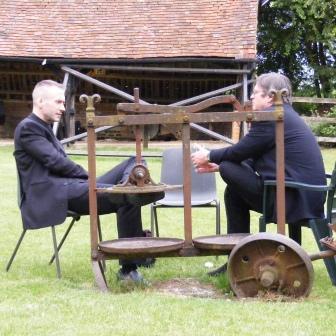 Of all the scenes we write, dialogue is the most complex and rich. Most writers I know take several passes to get it right. On average, I find there are seven clear steps to nailing a dialogue scene.
Of all the scenes we write, dialogue is the most complex and rich. Most writers I know take several passes to get it right. On average, I find there are seven clear steps to nailing a dialogue scene.
1) Get the characters talking This may sound obvious, but it’s an effort to break out of ordinary narration and hop into the characters’ heads. If we’re writing first person, we have to stop sharing the consciousness of their narrator to let the other people come alive. Writing down what each character says, in their own voices, will probably be quite enough to concentrate on in one pass.
2) Visuals Dialogue needs to be more than just a soundscape. Characters act while they speak. They shrug, pull faces, refill the kettle or polish a sword. The scene has to exist visually in the reader’s mind. While you’re writing, it’s easy to get tunnelled down one sense – usually aural – and forget that there are others.
3) Change As every scene must move the story on, we hope that each dialogue scene will contain something that matters to the characters. They can’t just natter for nothing. Even if they’re establishing their characteristics, it’s better if the scene does something else too. That could be a plot change or a shift in their relationship – perhaps the scene bonds them more tightly or creates rifts.
4) Reactions When your characters are talking, are they also reacting? If your other scenes show their internal dialogue, does this continue while they’re talking, or has this evaporated because you were concentrating on making them vocalise?
5) Subtext The scene might have more heft than a simple exchange of information. It might be a battle to get the upper hand. One character might be telling the other that he loves her, or to stop trying to find out what happened to the missing neighbour. The scene might have a layer that only one group of readers will understand: for instance, if the novel might be read by both adults and children, it may contain meanings that will only make sense to older readers.
6) Language Depending on your genre, the language might add a poetic dimension, reinforce your themes, reflect the characters’ different backgrounds and outlooks. Pathetic fallacy or your descriptions may add colour, feeding the texture and atmosphere of the novel.
7) Declutter Dialogue scenes are meant to run swiftly in the reader’s mind. Although we need context, action and description, we don’t need to add every breath and eyeblink. It may not matter that the character pours a glass of water while he lets out a sigh. You may have been too obvious with your allusions; the reader may be able to fill more blanks than you think. Let the scene sit for a few days, then go back with a fresh perspective and take out the clutter.
Do you have any steps to add? (Apart from a complete phase of changing your mind – which for me happens to me ad infinitum when I’m letting the characters talk to each other.) Share in the comments!
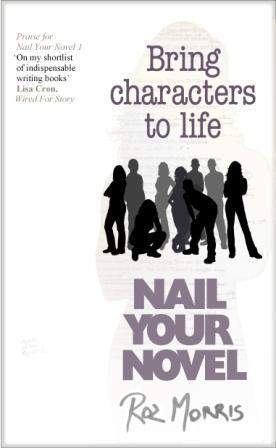 If you found this post useful, there’s an entire section on dialogue in Nail Your Novel: Bring Characters To Life. Out very soon… sign up for my newsletter to be told as soon as it’s available.
If you found this post useful, there’s an entire section on dialogue in Nail Your Novel: Bring Characters To Life. Out very soon… sign up for my newsletter to be told as soon as it’s available.
GIVEAWAY Andrew Blackman is offering a signed copy of his novel A Virtual Love on The Undercover Soundtrack. For a chance to win, leave a comment on the post or share it on Twitter, Facebook, G+ or anywhere else (and don’t forget to leave a note saying where you shared it).


April 24, 2013
‘Changing the voice of seven different narrators’ – The Undercover Soundtrack, Andrew Blackman
 Another Soundtracker returns this week, a new book under his belt. Andrew Blackman had set himself a steep challenge with his second novel. His story of love in the internet age had seven narrators, each needing their own voice and style. Early feedback from his agent said they weren’t distinct enough, and for a while, Andrew despaired of finding a solution. Then, as he always did in times of trouble, he turned to music. Which saved the day. He’s on the Red Blog with the Undercover Soundtrack to his second novel, A Virtual Love.
Another Soundtracker returns this week, a new book under his belt. Andrew Blackman had set himself a steep challenge with his second novel. His story of love in the internet age had seven narrators, each needing their own voice and style. Early feedback from his agent said they weren’t distinct enough, and for a while, Andrew despaired of finding a solution. Then, as he always did in times of trouble, he turned to music. Which saved the day. He’s on the Red Blog with the Undercover Soundtrack to his second novel, A Virtual Love.
GIVEAWAY Andrew is offering a signed copy of A Virtual Love. For a chance to win, leave a comment on the post or share it on Twitter, Facebook, G+ or anywhere else (and don’t forget to leave a note saying where you shared it).


April 21, 2013
Book marketing, self-publishing – and should you seek a publisher? All the fun of the London Book Fair 2013
 Last week I was one of Kobo’s writers in residence at the London Book Fair. Several of the questions I was asked reminded me that every day, writers are trying to grasp this new publishing world. I thought it might be helpful to post their FAQs.
Last week I was one of Kobo’s writers in residence at the London Book Fair. Several of the questions I was asked reminded me that every day, writers are trying to grasp this new publishing world. I thought it might be helpful to post their FAQs.
Should I post samples of my book on my blog to tempt people to buy?
You could, but you don’t need to. The ebook stores offer a sample of the beginning before readers buy. Here are two other things I do.
I use the eye-catching animated widget from Bookbuzzr (here’s Nail Your Novel ).
I also have an audio file of the first 4 chapters of my novel – 35 minutes of listening, perfect for a commute. It’s either downloadable (hosted as a file in Google Docs) or there’s an immediate-play version on Soundcloud.
Should I make a print edition?
If you’re going to meet readers in real life, yes. For my talk, I’d brought along print copies. When I pulled them out of my bag, the reaction was immediate and adoring, as if they were fluffy kittens. Even from the Kobo staff. People picked the books up, flicked through the pages, stroked the spine, read the back (spine and back covers are as important as front). I was amazed, actually, at how much impact a print edition makes.
I have a post here about interior formatting, but it’s quite a faff if you’re not used to it. Which leads me to…
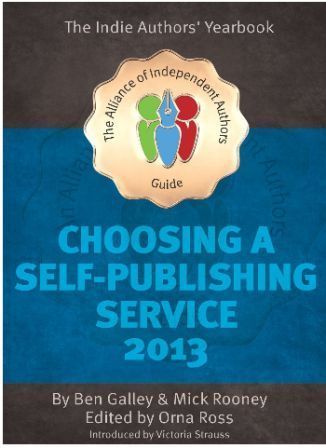 Which services should I pay for?
Which services should I pay for?
If your book is traditionally published, the publisher does a lot of jobs you’re probably not aware of. Developmental editing, copy editing, proofing, design of cover and interior, typesetting and ebook formatting. It’s a growing business to offer these services to indie authors, so The Alliance of Independent Authors has released Choosing a Self-Publishing Service 2013, with testimonials and warnings where necessary. Before you part with any money, get this book.
What can I do to market my book?
The guys at the KDP stand reported that this year’s number one question was ‘why isn’t my book selling’? (Some writers were ruder than that. I saw a furious lady collar an Amazonian and growl: ‘I have five books on KDP, what are you going to do about selling them?’. If Amazon starts offering marketing services, don’t wail that they’re evil. They get asked about it day in, day out. And it’s very unfair to blame them for it. They just give you the space to use.)
Amazon had some sensible replies: get a stand-out cover, choose categories wisely, write a cracking blurb, get honest reviews, generate curiosity about your work. And (the representative said this with an embarrassed cough): make sure the book is good.
More on marketing
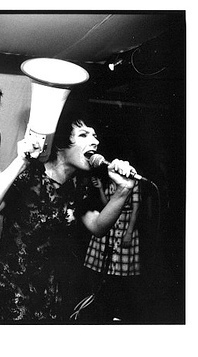 Kobo’s Mark Lefebvre (on Twitter as @MarkLeslie) gave a rousing presentation on writers connecting with readers. One method was ‘street teams’. Remember The Tufty Club? These days, post-Tufty writers are inviting fans to join dedicated sites and giving away special editions, tie-in jewellery, bags and temporary tattoos. If it fits your genre (I can’t quite imagine a red piano tattoo myself) you could make up a few as competition giveaways.
Kobo’s Mark Lefebvre (on Twitter as @MarkLeslie) gave a rousing presentation on writers connecting with readers. One method was ‘street teams’. Remember The Tufty Club? These days, post-Tufty writers are inviting fans to join dedicated sites and giving away special editions, tie-in jewellery, bags and temporary tattoos. If it fits your genre (I can’t quite imagine a red piano tattoo myself) you could make up a few as competition giveaways.
Another tactic Mark described was authors who band together as a bigger presence. Group blogs in a genre such as Crime Fiction Collective, author collectives (such as Triskele Books and Authors Electric) curated collections such as the League of Extraordinary Authors). And of course there are themed blogs like my Undercover Soundtrack.
One of the takeaways is that marketing isn’t one-shot. It’s about staying visible, steadily and sustainably. As with the editorial and production services, there are a lot of marketing companies who’ll take authors’ money for campaigns, but you don’t have to do that. You don’t need a big budget to keep your work on the radar, you just need imagination and likeminded souls. Paid advertising and publicity has its place but there’s a lot you can do yourself.
Let readers pre-order your book
Did you know Kobo lets you create a page for pre-orders? I didn’t. Why would you do this? Because when the book launches, you then get a big spike of sales because they all process on the same day. This pushes you further up the charts and makes you more visible in the Kobo store. Now, if I can just get my blurb written for Nail Your Novel: Bring Characters to Life…
BTW I changed my Twitter name
If you follow my writing advice stream you might have noticed I changed my handle from @DirtyWhiteCandy to @NailYourNovel. @DirtyWhiteCandy was the original name of my blog. I kept it as my Twitter name because I liked its bossy vibe, but as the years go on, fewer people would know (or care) where it came from and if people are looking for writing advice they’d be more likely to follow a tweep called @NailYourNovel. These days, indie author-publishers are looking smart and slick, rather than roguishly maverick. So, much as I liked the @DirtyWhiteCandy story and sass, it has to go.
FAQ: Should I submit to publishers and agents or should I self-publish?
Hmm. Sound of teeth being sucked. Look back over this post and you’ll see the amount of work involved in publishing. You don’t just write a book, upload and hope the fairies tell the world. You need expert help to create it and you need partners to spread the word. Publishers and agents can be your allies if the deal is right.
Big if.
Read on.
 Authors are still largely invisible in the publishing industry
Authors are still largely invisible in the publishing industry
One of the highlights for many was the heaving turnout at the Author Lounge in the digital quarter. Every author event was swarming with eager listeners. Authors report overhearing agents muttering about tumbleweed blowing through the foreign rights section, while on the upstart digital stands, all was abuzz.
But don’t be misled. In our own corner authors were calling the shots, but the rest of the conference told a different story.
Two examples.
1: Neil Gaiman
On the Sunday before the main fair, there was the Digital Minds Conference. The keynote speech was given by Neil Gaiman. I have to wonder what the delegates were meant to learn from him about digital media.
LBF’s press releases made much of the fact that he blogs and has a lot of Twitter followers. But, my friends, that’s because he was traditionally published. The publishers may have lauded themselves for inviting an author to tell them the way ahead, but they chose one who reinforces their faith in the old model. Even in his struggling years, Gaiman wasn’t like most new authors, writing books on spec while having another job. He was a contractor at DC Comics, getting paid while he made the work that made his name. In fact, why didn’t they ask JK Rowling, who famously lived hand to mouth while writing?
Better still, their figurehead could have been a bestselling indie author who made their success purely from publishing’s new digital tools. Hugh Howey, anybody? Instead they had Gaiman comparing publishing with a dandelion, throwing seeds out haphazardly and seeing what works.
Quite.
2: Ahem – monstrous storytelling
Elsewhere at the Fair, the authors weren’t getting much credit. I went to the session on digital storytelling. This featured a panel of publishers and developers, but no actual storytellers – the authors.
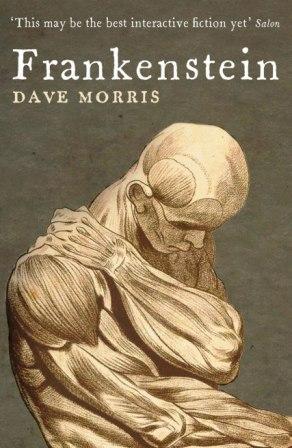 One of the panel members, Henry Volans of Faber Digital, wrote an accompanying piece for the Bookseller, in which he mentioned Dave’s Frankenstein app. He credited it to the publisher, Profile Books, and the developer, Inkle. He never mentioned Dave, the author. Now, forgive the personal bias but I hope you’ll see it illustrates a wider point. Dave had the entire idea. He pitched it to Profile, figured out how to make it work, reenvisioned and expanded the entire novel to the tune of 150,000 words. (Here are his posts in case you’re curious: part 1, 2 and 3.) The developer (Inkle) was hired by the publisher to add software and graphics. The reader’s experience comes mainly from the writing, not the pictures or the machinery.
One of the panel members, Henry Volans of Faber Digital, wrote an accompanying piece for the Bookseller, in which he mentioned Dave’s Frankenstein app. He credited it to the publisher, Profile Books, and the developer, Inkle. He never mentioned Dave, the author. Now, forgive the personal bias but I hope you’ll see it illustrates a wider point. Dave had the entire idea. He pitched it to Profile, figured out how to make it work, reenvisioned and expanded the entire novel to the tune of 150,000 words. (Here are his posts in case you’re curious: part 1, 2 and 3.) The developer (Inkle) was hired by the publisher to add software and graphics. The reader’s experience comes mainly from the writing, not the pictures or the machinery.
After yet another pundit wrote about Frankenstein and gave all the credit to Profile and the developer, Dave quipped on Twitter: ‘I very much enjoy Amazon’s Wool and Bloomsbury’s Harry Potter.’
Back to the Book Fair
Just two examples, but they betray a general attitude. In an era of revolutions, who gives publishers hope? Somebody who’s conquered the new world? No, a lovable demi-god of the old one. Who might tell them what new products the book might evolve into? The people who understand readers so well they can push the artform onwards? No, the middle men.
Authors still aren’t seen as significant contributors to the industry. And this is reflected in the deals publishers offer. They know you’re far more heavily invested in your book than they are and they’ll take unforgivable advantage. They’ll word the contract with woolly clauses that say ‘at our discretion’ and ‘in our opinion’, which mean they can do whatever they like with your rights and your manuscript. They’ll help you with the launch for a couple of weeks, after which you’ll be as alone as if you’d self-published, only you’ll make even less money. Leaving aside the emotional attachment, they have no idea that the work you put in on the average book probably amounts to two man years, and their contribution is a few man months.
Just tell me, should I seek a publisher?
I still think if you’re new to the industry you should query, because you never know what opportunities you might find. You might get feedback that helps you make the book better, or confirms you’re ready to reach out to the market in whatever way suits you.
An agent is probably more help to you at the moment than a publisher. Even if they don’t get you a deal, it’s a contact in the industry, should you need it. But also consider the agent’s motivation. They’re not risk-takers or talent-nurturers. They want you to make a deal, otherwise they don’t get paid. You might get an offer that looks like quite a lot of money, but it might be all you see and the terms might be punitive.
Publishers at the moment don’t seem to be worth the bother. Smart authors can do better for themselves, but this can’t continue. For a while, publishers will bluster on, trying to keep things the way they are. But in a few years’ time, they might be offering true partnerships and fair, transparent deals.
Bottom line? Explore all your options. Treat publishers like any other partnership or service you might use. Evaluate what they will do for you and what you will give them. Self-publishing offers you a powerful walk-away point, which you can use as a bargaining chip even if you want a traditional deal.
Thanks for the LBF pics Porter Anderson and the megaphone pic Neate Photos,
Thanks to everyone who dropped in to see me at LBF! If this post hasn’t bludgeoned you with options and confusion, is there anything else you’d like to ask about publishing?


April 16, 2013
‘Love is the key to these stories’ – The Undercover Soundtrack, Andy Harrod
 I heard a quote this week that I love: ‘All art aspires to the condition of music’. Meaning, it works beyond its medium; a direct connection with nerves and heart. This quote seems particularly to fit my guest this week. He says he writes from a need to understand, to uncensor, find meaning and connect with self and life. He prefers his music on vinyl (good man!) to better enjoy its sleeve art, and his book, Living Room Stories, is housed in a 7in record sleeve. How could you resist? He is Andy Harrod and he’s on the Red Blog with his Undercover Soundtrack.
I heard a quote this week that I love: ‘All art aspires to the condition of music’. Meaning, it works beyond its medium; a direct connection with nerves and heart. This quote seems particularly to fit my guest this week. He says he writes from a need to understand, to uncensor, find meaning and connect with self and life. He prefers his music on vinyl (good man!) to better enjoy its sleeve art, and his book, Living Room Stories, is housed in a 7in record sleeve. How could you resist? He is Andy Harrod and he’s on the Red Blog with his Undercover Soundtrack.
GIVEAWAY Andy is giving away 1 handmade copy of Living Room Stories and a print of two from tearing at thoughts. To enter leave a comment or tweet the song that represents love for you. Andy will pick his favourite. If you take the tweet option, include the link to the post and the hashtag #undersound. Good luck!


April 14, 2013
One foot in another world: discovering what it is to be a novelist
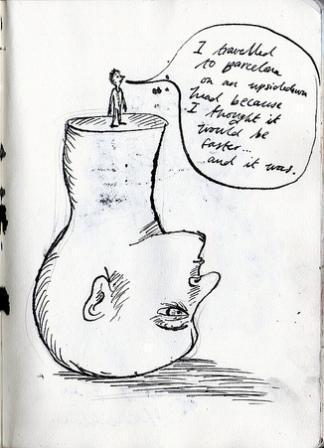 ‘I’ve been working on a novel,’ he said, and worlds collided.
‘I’ve been working on a novel,’ he said, and worlds collided.
I have such conversations all the time, but never in that place. I was freelancing on the magazine where once upon a time I was a full-time sub-editor. It was a day of facts, punctuation, page proofs, libel-watching, house style, hard news and deadlines.
Then one of the desk editors told me he’d started a novel and we jumped universes.
First he told me he’d had a story idea. An idle ‘what if’ moment; an entertaining daydream. Then, purely to keep track, it became necessary to write it down.
One day he discovered a book that seemed made for this situation (not Nail Your Novel; we need to have words about that). Before then, he hadn’t known that author manuals existed. He hadn’t done writing exercises since his journalism training, but now he found himself drawing up character sheets and developing back stories.
Ideas continued to ambush him, raining out of the sky like the pieces from random jigsaws. He saw an outlandish person on the train. Big hat, fur coat and tarantula-tight jeans: exactly what his character would wear. Once transplanted into the manuscript, the character disobeyed the story plan and did something else. It’s now a crime novel, which my colleague didn’t intend, but the characters made him do it.
He’s a journalist. He finds the facts, gets the quotes and rattles out the words. This novel, though, is not playing ball. Although it follows him like a mental entourage, it only speaks and moves when he’s not at the keyboard or can’t grab a pen. Strap-hanging on the train, interviewing an expert. Even in the shower. He declared this with some outrage, as though the characters had snuck in and swiped the curtain. Which is pretty much how he regards the whole surprising business.
Writing has been my habit for so long that I’d forgotten what it was like when it was new. Of course we never stop honing our craft but these days my zone of discovery has shifted to marketing, finding where I fit and what new platform I need to learn. Although these tools and possibilities are fresh and exciting, it’s nice to be reminded how I got here and what it all comes back to.
Tell me: how did you get here?
Thanks for the drawing, Freya Hartas, used with permission

Squinting to read it? Click the pic to enlarge
NEWS If you’re at the London Book Fair on Wednesday this week, drop by the Kobo stand where I’ll be Writer In Residence! This is a rather astonishing development and I’m still pinching myself, but I’ll write a roundup post afterwards where I can indulge the ‘wow’ moment and hopefully say something useful too. Navigate your way to stand Y505 in the digital zone between 2.30 and 3pm on Wednesday 17th April (or instruct your nose to find coffee because it’s near the cafe).



